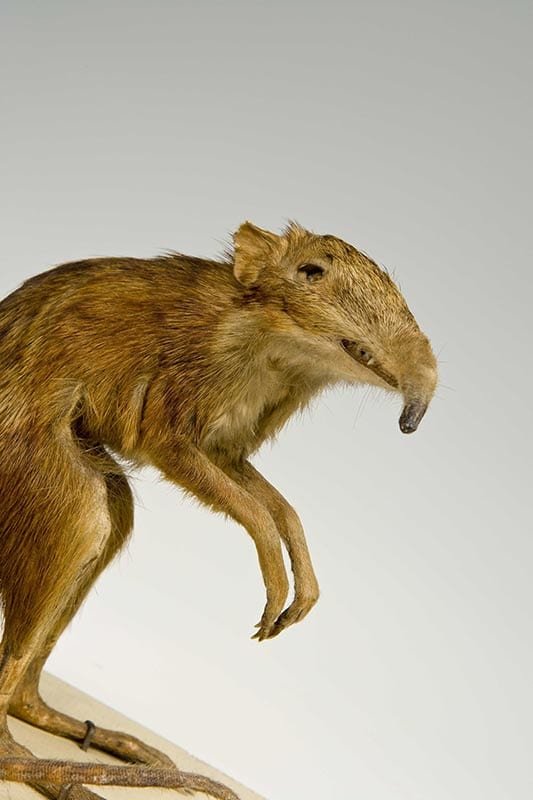Specimen of the Week 247: the pickled dissected monkey head
By ucwepwv, on 8 July 2016
Happy Friday, Grant aficionados! Welcome back to the high-point of the week, where Saturday is almost within reach and we get to share a gem from the collection for your delectation.
This week that particular gem is the…

LDUCZ-Z445 Sapajus sp.
**pickled dissected monkey head**
Where is my mind?
While this specimen may seem a little gruesome at first glance, it’s interesting because the skull has been carefully removed to show the brain and eyeball on one side of the head and the cavity where the brain sits on the other side. The museum is full of skulls and brains in jars, but it’s less usual to see them prepared in a way that shows how they fit together.

LDUCZ-Z445 Sapajus sp.
Monkey gone to heaven?
There’s something about a specimen with a face that makes it more easy to relate to than a dry skull or grey blob of organ in a jar. That usually means taxidermy in a zoology collection, which is why it’s no surprise that most of the Grant Museum of Zoology’s signage features specimens like this characterful elephant shrew:

I think that this is because humans are highly communicative and we rely on signals in the form of facial expressions extensively during discussion. It’s part of the reason why emoticons are so useful in conveying tone in text communication, since the meaning of words can be completely changed depending on whether they are delivered with a smile or a frown. For example:
you have to love this weather 🙂
carries a very different meaning to:
you have to love this weather 🙁
For a similar reason, specimens with faces are more easily anthropomorphised than those without and the arrangement of the features can trigger an emotional response far more effectively than a faceless specimen might. In this case, the monkey has what I think of as quite a peaceful expression on its face – resting gently in the afterlife perhaps – if it wasn’t for the exposed eye which adds a horror/science-fiction twist:

Borg monkey
Bone machine?
Of course, such anthropomorphism is a distraction from the serious business of biology. The majority of specimens in the collection weren’t really prepared with public display in mind, they were made as tools for teaching and research, to help us better understand the underlying machinery of the body. The specimens we have are great at doing that, which is why I love the collection – but it doesn’t mean we can’t have some fun with them too, after all, our creativity and imagination are by-products of our complex brains and just as worthy of celebration as the physical structure.
Paolo Viscardi is the Curator of the Grant Museum of Zoology
One Response to “Specimen of the Week 247: the pickled dissected monkey head”
- 1
 Close
Close


Brilliant!
It is a fantastic way to create extra attention for your specimens. I truly like your anthropomorphism approach.
The monkey is a amazing specimen. Doesn’t it take exceptional skill to make a specimen like that?